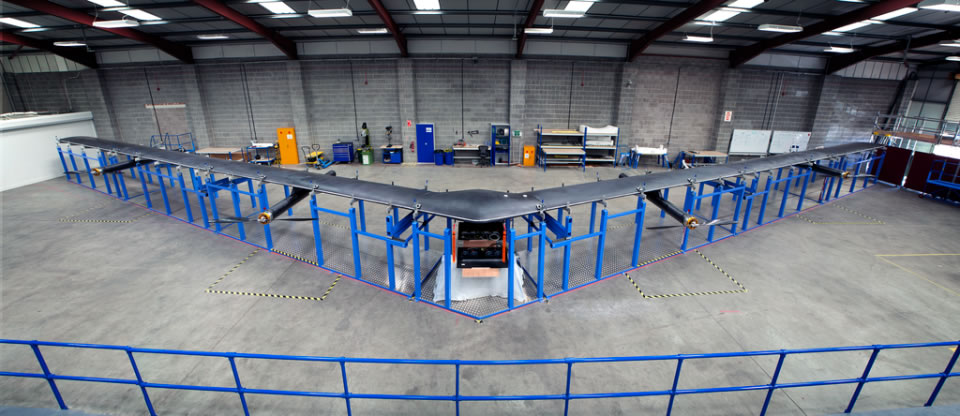Facebook has revealed its first solar-powered drone, Aquila, which it plans on using to provide internet access to remote areas.
The drone, which has a wingspan comparable to a Boeing 767, will be capable of flying non-stop (without having to land) for up to three months.
Facebook said that “when deployed, it will be able to circle a remote region for up to 90 days, beaming connectivity down to people from an altitude of 60,000 to 90,000 [feet].”
This means that the Aquila will fly above commercial planes during the day and slowly drop down at night – conserving power when its solar panels are not receiving charge.
Aquila does not require a runway as it is designed to be released by attaching helium balloons that will help rise the drone to its preferred height.
It employs “free-space optical communication”, or FSO, which uses invisible, infrared laser beams to transmit data using light.
A team at Facebook has been working on laser tech that can reach speeds of tens of gigabytes per second – fast enough to allow hundreds of thousands of people access broadband Internet simultaneously.

The drone is 42.67 meters in diameter -roughly the same scale as a Boeing 737 – and is covered with solar cells.
Facebook has been working on the Aquila since it acquired the UK maker of solar-powered drones, Ascenta, for $20 million last year.
The team based in the UK has conducted flight tests in a series of scale models.
Over the next six months, the group will carry more tests before eventually taking it out for its first test flight.
Facebook’s vision to give more people access to the internet
Over four billion people have no internet access and 10% of the world population lacks the necessary infrastructure to stay connected. Facebook is working on drones, satellites, lasers and terrestrial Internet technology to make internet access more available.
Zuckerberg said, “Our vision is to give people more access to free services over time”.

